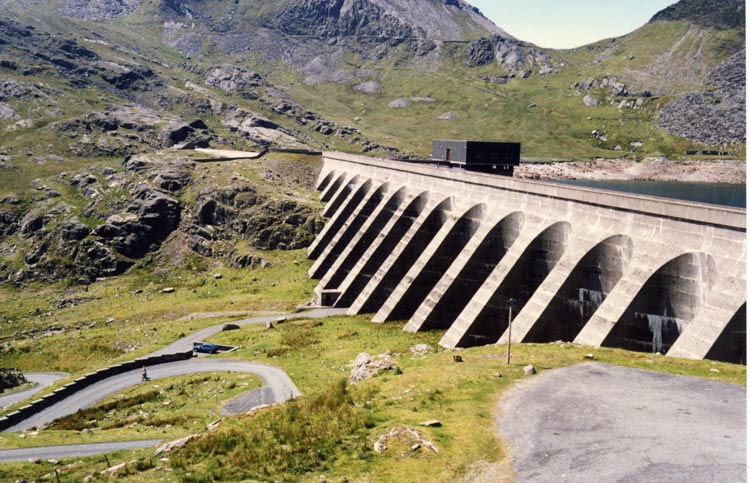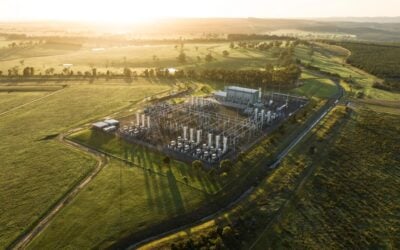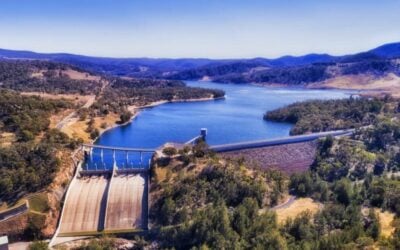
While the majority of new energy storage capacity this site reports on is provided by lithium-ion batteries, other forms of energy storage will have a vital role to play in the global energy transition too. Pumped hydro has been with us for many years, but it’s also been a long time since the UK built any new pumped hydro capacity. Among new projects proposed, Coire Glas in Scotland could be pivotal, says Andy Sloan, managing director at consultancy COWI and John Ord from design and engineering group Stantec.
The move from carbon intensive to renewable electricity generation is changing the role that pumped hydro energy storage can play in supporting the reliability of the UK’s electricity grid.
Enjoy 12 months of exclusive analysis
- Regular insight and analysis of the industry’s biggest developments
- In-depth interviews with the industry’s leading figures
- Annual digital subscription to the PV Tech Power journal
- Discounts on Solar Media’s portfolio of events, in-person and virtual
As the world’s largest, most proven and cost-efficient large-scale storage technology, pumped storage’s rapid response time and capacity allows it to effectively support the grid, providing vital cover for sudden surges in demand while also having the capability to avoid the inefficient curtailment of surplus renewable electricity.
The UK’s first major pumped storage project, Ffestiniog Power Station in Wales, was originally built in 1963 to provide the country’s electricity grid with just that – fast response, long duration capacity to improve resilience during periods of system stress. Its sister – Dinorwig Power Station, built 20 years later in 1984 – provides a similar service, with the ability to reach maximum generation output in less than 16 seconds.
Fast forward 35 years, electricity generation patterns are evolving as the UK progresses along its journey to net-zero and pumped storage now needs to play a slightly different role to what it did in the past – one where it bridges the gap at transmission level during periods of low offshore wind output instead, and where it absorbs excesses wind energy during high wind periods.
While fast response times will still be important, new pumped storage projects need to provide greater capacity for longer durations. With that in mind, working in tandem with local energy storage solutions, pumped hydro is about to witness an exciting revival in the UK in response to ongoing changes to the electricity generation mix.
Powering three million homes with Scotland’s largest-ever hydro project
Scotland’s Coire Glas project will be the first large-scale pumped storage scheme to be developed in the UK for more than three decades.
A collaboration between multinational energy company SSE, design services group Stantec and engineering, economics and environmental science consultancy COWI, the proposed 1500 MW scheme will provide fast response, but will also be capable of providing the UK with capacity for long periods, up to days at a time if needed by the electricity grid.
In doing so, it helps to unlock even greater potential for offshore wind by providing the necessary support to maintain grid reliability in the face of increasing generation intermittency.
The scale of the project is unprecedented in terms of size, technicalities and location. Underground construction will take place nearly a kilometre below ground, while the over 90-metre-high dam will become the largest in the UK. The underground cavern that needs to be excavated to house the power plant will be equivalent to the size of Glasgow Cathedral.
The project’s remote location and vulnerability to harsh winter conditions create complexity for execution particularly when it comes to access. However, the site’s proximity to the Caledonian Canal also offers an unusual solution for the movement of abnormal loads such as heavy construction machinery and the project’s electricity generating equipment. By constructing a site-specific jetty, abnormal loads can be transported to site by barge, removing the complexity of navigating the local road system.
Further, to overcome many of the project’s other complexities, the team is undertaking one of the most extensive ground investigations of its time allowing for the analysis of a huge volume of geotechnical data before construction begins. This is all the more necessary given the site’s proximity to the Great Glen fault line; a fault line so prominent it can be seen from outer space. The geotechnical data will observe ground conditions to inform on the potential risks and challenges posed to delivering the project.
To collect the data, an exploratory tunnel will be excavated from the shores of Loch Lochy down to where the transformer and turbine halls will reside, collecting samples as it progresses. Once the tunnel has reached hall level, further boreholes will be drilled laterally, some over 300 metres in length, to collect further data to investigate the rock conditions to inform the design and help manage risk. Similar assessments will also be executed where the dam foundations will be located.
Once collated, a data model will be built, combining 3D imaging technology, to establish a comprehensive view of the site’s geology. The project team are also working closely with British Geological Survey to update the records and maps that they hold of the area.
Drill and blast: A lot has changed since historic pumped storage plants were built
Since the last pumped storage scheme was built nearly 40 years ago, significant innovations have been made across almost all elements of project delivery. Some of the UK’s largest tunnelling projects such as Silvertown and HS2 are being completed using the latest advances in tunnel boring machines. Coire Glas however will rely on the ancient art of drilling and blasting – a technique that dates back centuries, but it is still just as relevant today.
Unlike tunnel boring machines, the drill and blast method is far more flexible in accommodating changes in tunnel size, direction, geometry and alignment. This is particularly useful for Coire Glas which requires a range of cavern and tunnel diameters. Relying on explosives, it is ideal for hard rock conditions but requires quite a unique skillset to execute in comparison to boring.
The unique skillset required for the project has been honed by the team through a great deal of experience delivering large infrastructure projects at home and abroad. Stantec has a wealth of international experience to leverage having delivered pumped storage projects across the likes of New Zealand and the US, while COWI has a long history of working with Scotland’s rock conditions and understands its variability, the risks that it can pose and how to mitigate them. This, combined with COWI’s expertise in delivering projects that use drilling and blasting means the team will be able to deliver Coire Glas to the complex specification that it requires.
Pivotal in bringing offshore wind to where the people are
Coire Glas represents a hugely exciting project for the UK. Not only will it play a vital role in enhancing the UK’s grid reliability, it will be pivotal in creating the flexibility needed to bring more offshore wind resources online in support of the country’s net zero goals. The project is also hugely exciting from an engineering perspective. To deliver a project of this scale and ambition requires cross-stakeholder collaboration – from de-risking investment to deploying best-in-class engineering to ensure the project is delivered to time, budget and specification.
Andy Sloan is managing director and senior VP at COWI, a consulting group founded in Denmark in 1930, with competencies in engineering, economics and environmental science. Co-author John Ord is business director for energy and resources at Stantec, an engineering design services company.






